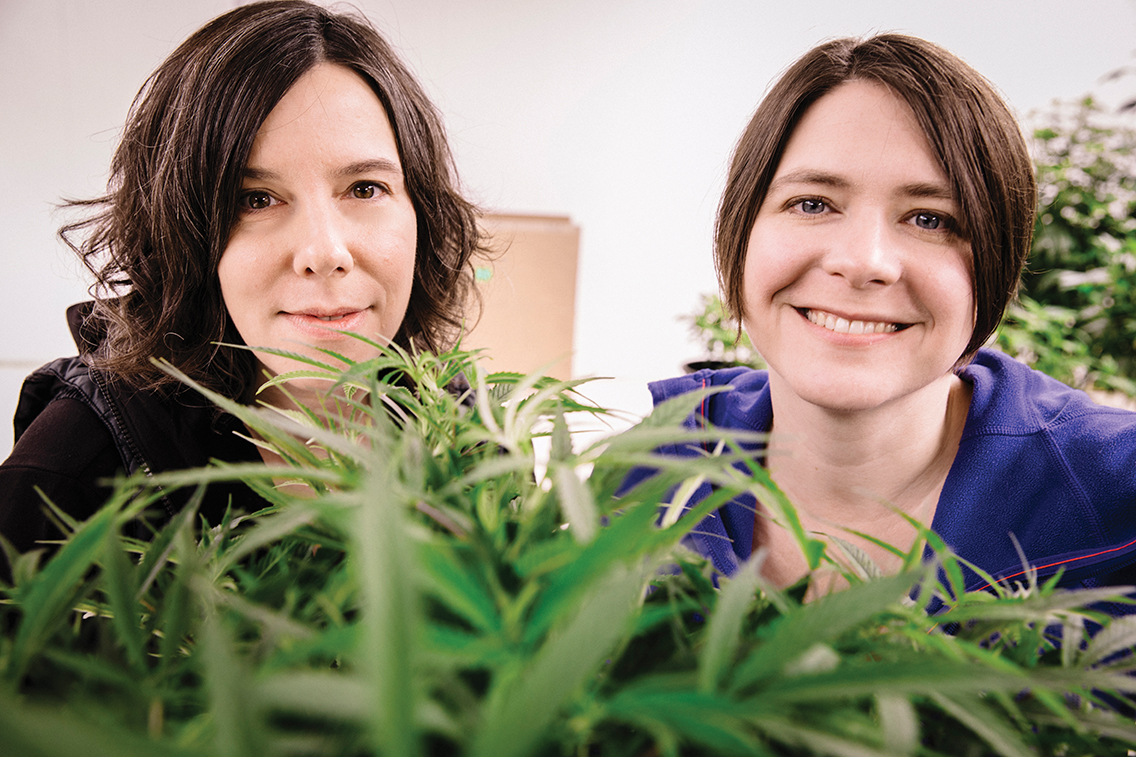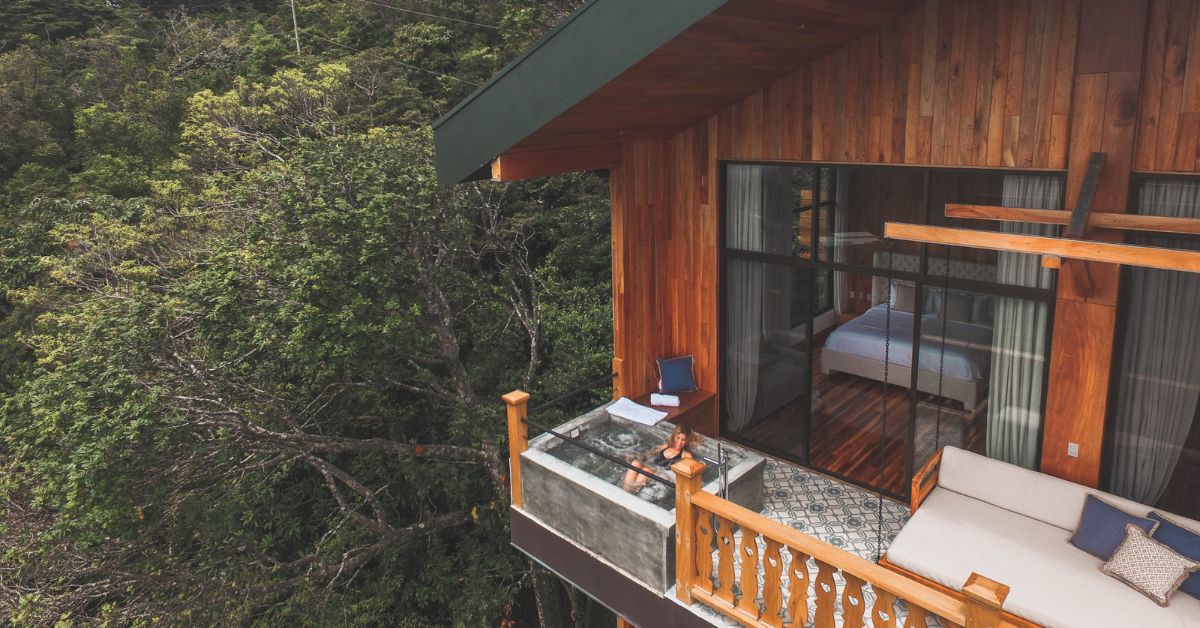The intersection between cannabis culture and the LGBTQ2IA+ community has a long-winded and impassioned history. Long before legalization, boutique dispensaries and widespread acceptance, the cannabis industry was built on a foundation of diversity, inclusion and—most importantly—equality. The BIPOC and LGBTQ2IA+ experience cultivated that culture and created a safe space for people to come together around cannabis. Today their seat at the head of the table has been usurped, but that doesn’t mean they’re getting any quieter.
Culminating in the margins of society and eventually gaining rights in mainstream policy, both cannabis culture and queer people have always been advocates for human rights and equitable accessibility. Today, cannabis has moved from a grassroots movement and legacy market into a multi-billion dollar industry. But sometimes it almost feels like one has absolved the other leaving little space for the pioneers to get an adequate slice of the pie.

The herb as we know it would never have become as widely accepted if it weren't for the legacy work of the BIPOC and LGBTQ2IA+ communities who advocated for cannabis rights long before it was the hip thing to do. “When cannabis was first brought to the gay community it was a medicine, it helped people that were dealing with HIV and AIDS,” says Jay Jackson, better known as choreographer, cannabis advocate and RuPaul’s Drag Race alum Laganja Estranja. “That’s why my Queer brothers and sisters fought to get Proposition 215 or the Compassionate Act (1996) passed here in California.” The activists he’s talking about were people like Harvey Milk and Dennis Peron who created safe spaces like San Francisco’s Cannabis Buyers Club, which helped queer people gain access to cannabis as an alternative medicine to treat symptoms of HIV. This work would lead to a trajectory of legalization in many other states and countries, and a go on to create a global industry projected to reach over $70 billion by 2027 (Grand View Research Analysis Report). The issue with the industry today is that so many of the early advocates that fought for the legalization of cannabis have been pushed out of the equation. The reality is that most of the dominant power structures that make up so much of our economy are built on oppressing BIPOC and LGBTQ2IA+ voices that first gave cannabis its platform.
“Its very harmful that methods of access are being catered toward the white cisgender community,” says Ivy Zmuda, VP of Regulatory Affairs at Tantalus Labs and a transgender woman.
Transgender and other LGBTQ2IA+ people who suffer from mental health and physical illnesses are not given the same treatment, even in the cannabis community, which used to be a safe haven for non-pharma and more naturopathic remedies. The adversarial relationship between doctor and patient can make legal cannabis even more inaccessible for the transgender community. “For many trans people, they view doctors as a roadblock or a gatekeeper,” says Zmuda.
Cannabis has also been a huge gateway for many LGBTQ2IA+ people to find ways to self-medicate in a safe and informed way. “I think when you're marginalized it forces you to look outside the box. I think that’s why there’s such a great amount of usage in the queer community because most queers are suffering from PTSD, growing up different and experiencing what its like to be ostracized,” says green queen Laganja Estranja. “I think people of colour, different religions, we can all relate to that in some way, but ultimately cannabis should be bringing people together.”
Jordan Smith, VP of Project Management of Hexo Corp. started using cannabis as a means of coming to terms with his sexuality. “I used it in high school for the social aspect of it. Obviously I was in the closet at the time. I got teased a lot for being gay even though I didn’t fully accept it, so if I was able to smoke a joint with people, I was able to make friends that way,” says Smith.
The lack of accessibility for cannabis consumption in the medicinal and recreational realm is carried out through similar practices in business. For people in the queer community, especially BIPOC and queer cannabis brands, this means unequal representation in the market. Even cannabis conglomerates that promote active corporate social responsibility (CSR) and inclusivity campaigns are not doing enough to hire, promote and uplift members of the LGBTQ2IA+ community. “The industry has too few equity and justice initiatives, and is replete with performative allyship. Executive level CSR positions are now a rarity, removing a real seat at the table for communities facing oppression,” says Zmuda.


Consumers have more power than they want to give themselves credit for. And you have to give consumers more opportunities on what they want to purchase and people are becoming more and more choosey, justifiably so.
This has been an on-going issue with queer representation becoming a token of CSR instead of a vested interest. “A lot of gay people have money, a lot of gay people don’t have kids, a lot also have more expendable income. You know I’ve just found it quite silly on a business level, besides the personal level, besides the human level, why have these men not tapped into that?” says Estranja.
As more companies plaster rainbows on their social media as a symbol of allyship, they forget to consider the weight that holds to the LGBTQ2IA+ community and the responsibility it entails for their brand. “All you have to do is look at who is running the majority of the LPs, retailers, brands, the OCS, who are the lottery winners, who is included in advertising? Where are all the people of colour? Out and proud queer folks? Women, especially women of colour? Trans people? People with disabilities?” says Edward Kehyayan, Category Manager, Cannabis & Promotions, Friendly Strangers Holdings Corp.
The misrepresentation of cannabis consumers in the market is especially evident when speaking about the BIPOC and LGBTQ2IA+ experience. “There’s no diversity, there’s no social equity in Canada. So a lot of what we have tried to do is call the industry in to realize that there’s more that needs to be done with making equity and inclusion a part of this space. It’s a non-negotiable at this point,” says Mary Pryor, co-founder of Cannaclusive and Chief Marketing Officer at Tonic CBD. In order to hold cannabis businesses accountable for their equity initiatives, Pryor and the rest of the team at Cannaclusive have created the Accountability List, which lists the CSR actions and activism Canadian companies have committed to and publicly holds them accountable. “I do think that the pathways to ownership, the pathways to having this space in the industry are not clear and they’re mostly gate kept. So, strategically we want people to be more aware of what they can do and how they can do it; to secure more and more opportunities across the board, to not only appeal to more audiences because it’s just the right thing to do, but inclusion, diversity, understanding all the different facets of marketing and understanding what that all means,” says Pryor.
Critics argue that cannabis culture has been stripped out of the industry and whitewashed to create a more for-profit, aesthetically driven market which is truly alienating its consumers. “I think people in charge who don’t love the plant, understand the plant, get why it's here, shouldn’t be promoting it in any way,” says Estranja. This notion of sales by and to the cisgender straight white community is cutting off companies’ access to the extremely diverse market of cannabis consumption. *“At the end of the day, companies are soon gonna’ realize that boys in heels sell weed just as much as girls in heels.”
Katie Stem, who founded Oregon’s Peak Extracts and now runs it alongside her life partner Kate Black, also feels somewhat pushed out by the heteronormative advertising and promotion of cis values in cannabis. “I want to empower all women, but sometimes I don’t feel particularly welcome in the subsets of women in cannabis, because my gender identity does not perfectly align with traditional femininity,” says Stem. She argues that by marketing to cis men with out-dated campaigns, cannabis is becoming less and less accessible for consumers. “You lose half of your audience when you do that. Not to mention it’s demeaning to women, but in terms of our brand, we want it to be for everyone.”
In order to reevaluate the market and the identity of the queer community within it, many LGBTQ2IA+ advocates and business owners are trying their best to mentor and uplift members of their community and promote growth from within. “I think mentorship on the whole is always a good idea, but specifically for LGBT people who go through experiences that only another person that’s a part of the community could relate to,” says Smith.
At Peak Extracts, Stem is also trying to promote internal growth, “It’s very important for me to mentor our employees, moving forward in the industry within us. Because when you go to higher a management positions, there’s just not a lot of women and Queer people that are qualified because they weren’t promoted from within.”
On the consumer side, there has been a call to action by many small organizations and businesses to create transparency within their brand. Initiatives like Cannaclusive’s Accountability List and Cannabis for Black Lives are just a few integral assets cannabis users need to digest before they can make educated decisions about where and who to buy from. *“Consumers have more power than they want to give themselves credit for. And you have to give consumers more opportunities on what they want to purchase and people are becoming more and more choosey, justifiably so,” says Pryor. In order to turn up the volume of minority voices that represent well over half of cannabis consumers in North America, consumers must understand their purchasing power. “This cannot just be the work of BIPOC communities and LGBTQ2IA+ communities, but at some point White people have to admit that this game is rigged. That when it comes to equity and inequality, it takes white people giving something up to justify that gap.”







